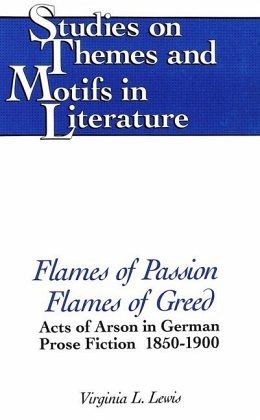Nicht lieferbar

Flames of Passion, Flames of Greed
Acts of Arson in German Prose Fiction, 1850-1900
Versandkostenfrei!
Nicht lieferbar
This well-written, lively, concise and meticulously executed study establishes five basic models of thematic representation of arson in literature. By selecting texts from a wide spectrum that covers not only well-known works by Auerbach, Raabe, and Anzengruber, but also best-sellers of the nineteenth century that are no longer accessible, Professor Lewis succeeds in demonstrating that dominant thematic patterns and motif clusters foster schematized action sequences in works not usually grouped together by literary historians. In addition, the study shows that a unique social change (introduci...
This well-written, lively, concise and meticulously executed study establishes five basic models of thematic representation of arson in literature. By selecting texts from a wide spectrum that covers not only well-known works by Auerbach, Raabe, and Anzengruber, but also best-sellers of the nineteenth century that are no longer accessible, Professor Lewis succeeds in demonstrating that dominant thematic patterns and motif clusters foster schematized action sequences in works not usually grouped together by literary historians. In addition, the study shows that a unique social change (introducing fire insurance) and the resulting deviant behavior (arson for profit) are not simply mirrored in literature, but subsumed by previously existing thematic constellations.



